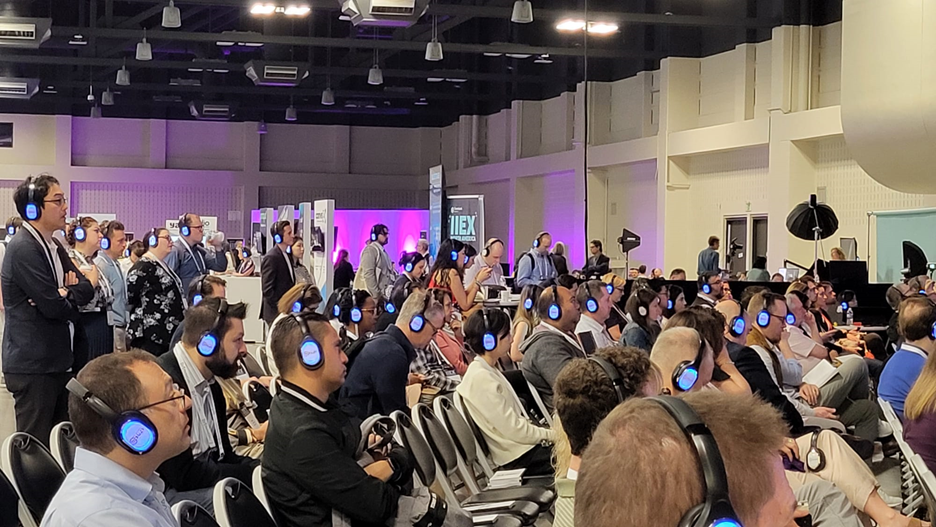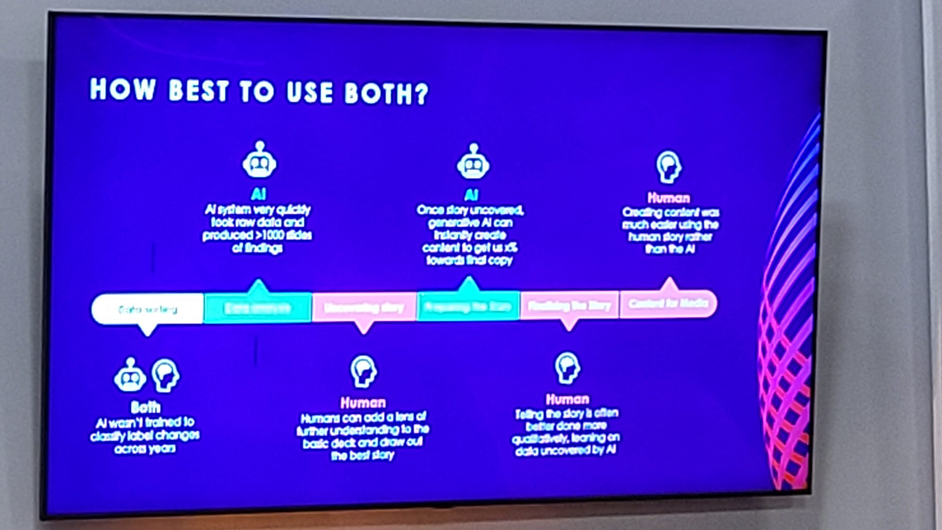In April 2024, Phase 5’s Stephan Sigaud attended the Insights Innovation Exchange North America conference (IIEX.NA) in Austin, Texas. This highly anticipated event attracted more than 1,000 attendees and featured presenters and exhibits that shed light and sparked conversations about emerging best practices and technology, including AI, that are driving the insights industry forward.
Upon returning from the event, Stephan was kind enough to sit down to an interview with our Insights team to share some of the details and takeaways from his experience. Read on to learn more.
Q: Welcome back, Stephan! So tell us, what was the overall theme of IIEX.NA, and why do you think it’s particularly important and relevant to the industry right now?
A: Thank you! Well, IIEX stands for Insights Innovation Exchange, and true to its name, the conference focused on innovations in the market research industry, including the latest tools and technologies, research methodologies and/or techniques, and solutions to challenges that maybe didn’t exist even a year or two ago.
Like every industry, the impact and speed of technological advancement makes innovation (as a topic) extremely relevant. Attendees like myself were of course curious to learn about new tech, but I think many were also there to compare notes about how market research firms have responded to technological evolution thus far, and what best practices exist to integrate technology with uniquely human talents and intelligence going forward. Unsurprisingly, there was a lot of talk about AI, and its many potential applications to the insights industry.
One thing that struck me was how these themes are currently relevant to businesses all around the world. In other words, everyone seems to be talking about AI applications in research, with no particular country or region significantly ahead of the curve. I encountered presenters and attendees from Germany, Denmark, and Japan, as well as North America. The change is truly happening to everyone, globally, at the same time.
Q: How do you think the conference themes manifested themselves during the event?
A: The event format itself was the most technologically advanced that I have seen. Yes, there were tools that enabled attendees to identify and connect online with like-minded people; these types of tools have become fairly standard at large conferences. In addition however, every attendee had a headset that could be tuned to one of four concurrent presentations. Each presentation was color-coded, and the user’s headset would turn the color of the selected presentation. I actually observed some people who were watching one presentation, but apparently listening to another, all while simultaneously doing something else (taking notes?) on their phone.
While the headsets certainly enabled multi-tasking and an opportunity to maximize content consumed within a limited timeframe, I did find that they made spontaneous in-person communication less likely to happen, compared to other conferences I have attended. I found this experience an interesting parallel to the conference theme of how to balance technology and human touch.

Q: What presentation topics were most common? What did people most want to hear or talk about?
A: Clearly there are risks and rewards when it comes to adopting AI-enabled tools & techniques in market research. A bunch of presentations with titles such as,
- Re-humanizing Insights
- How to Re-Human Data Before It’s Too Late
- The Convergence of AI and Imagination
tackled the question of how to find balance. And the underlying question of whether, when, and/or how AI might replace jobs in the industry was ever-present. Once again, I think this is a question being asked in most industries.
Q: What presentation stood out the most for you?
A: There was one presentation in particular that really intrigued me, pitting AI directly against humans. The presenting company had conducted a study on the compared effectiveness and quality of human-centered vs. AI-driven analysis and reporting tasks throughout a typical market research process.
Results showed that, while sometimes AI outperformed, at other times human analysis and interpretation was optimal, depending on variables such as the project objectives, methodology, and study stage. AI’s primary advantage was speed with respect to tasks such as data processing or first-draft content creation. However humans were found to be best at truly understanding implications and drawing out relevant insights, as well as creating final draft content suited to a particular audience and channel.
The conclusion I came to is that both AI and human-centred research techniques are going to continue together for a while. It isn’t a case of one or the other, it’s both.

And of course another conference highlight was Steve Hansen’s presentation, An Innovative Approach to Innovation!
Q: What was the most original presentation or topic you saw or heard?
A: The presentation entitled “Peach Fuzz” and Beyond: The Power of Trend Intelligence definitely caught my attention, claiming “Kindness is the new kale”. I thought that statement was very unique and provocative.
The idea presented by IFF (International Flavors and Fragrances) was that keeping abreast of consumer trends is important (perhaps more important than ever before) to any company that caters to consumers. Applying aspects of that trend to a brand experience can help it resonate. In IFF’s words, “grasping the underlying causes behind trend adoption allows us to make more creative and relevant choices in product design, marketing and strategy”. It seemed to me that applying this type of thinking to results from JTBD-centred innovation research could yield very powerful results.
Here’s the example that was shared of leveraging a consumer trend for product development:
Kindness is currently a prevailing message across media outlets big and small. It’s cool to be kind to others, and to be kind to ourselves. If you’re a consumer-facing paint company, how do you leverage this current “trend” to come up with your color of the year? One could say that kindness is the opposite of hard, edgy, and sour. It’s more soft and sweet. Like a peach, or like peach fuzz. And in fact, Pantone’s 2024 color of the year is Peach Fuzz.
One of IFF’s top takeaways from this presentation is that “Holistic and human-centred understanding is more critical than ever to our disruptive world.” And I tend to agree. Once again, this supports the idea that a tech / human balance continues to be a critical success factor in business.
Thanks again to Stephan Sigaud for sharing some of his thoughts and insights from the recent IIEX.NA conference. To talk to Stephan further, or to explore how Phase 5 balances human-centred and tech-driven approaches to our clients’ studies, contact us.




